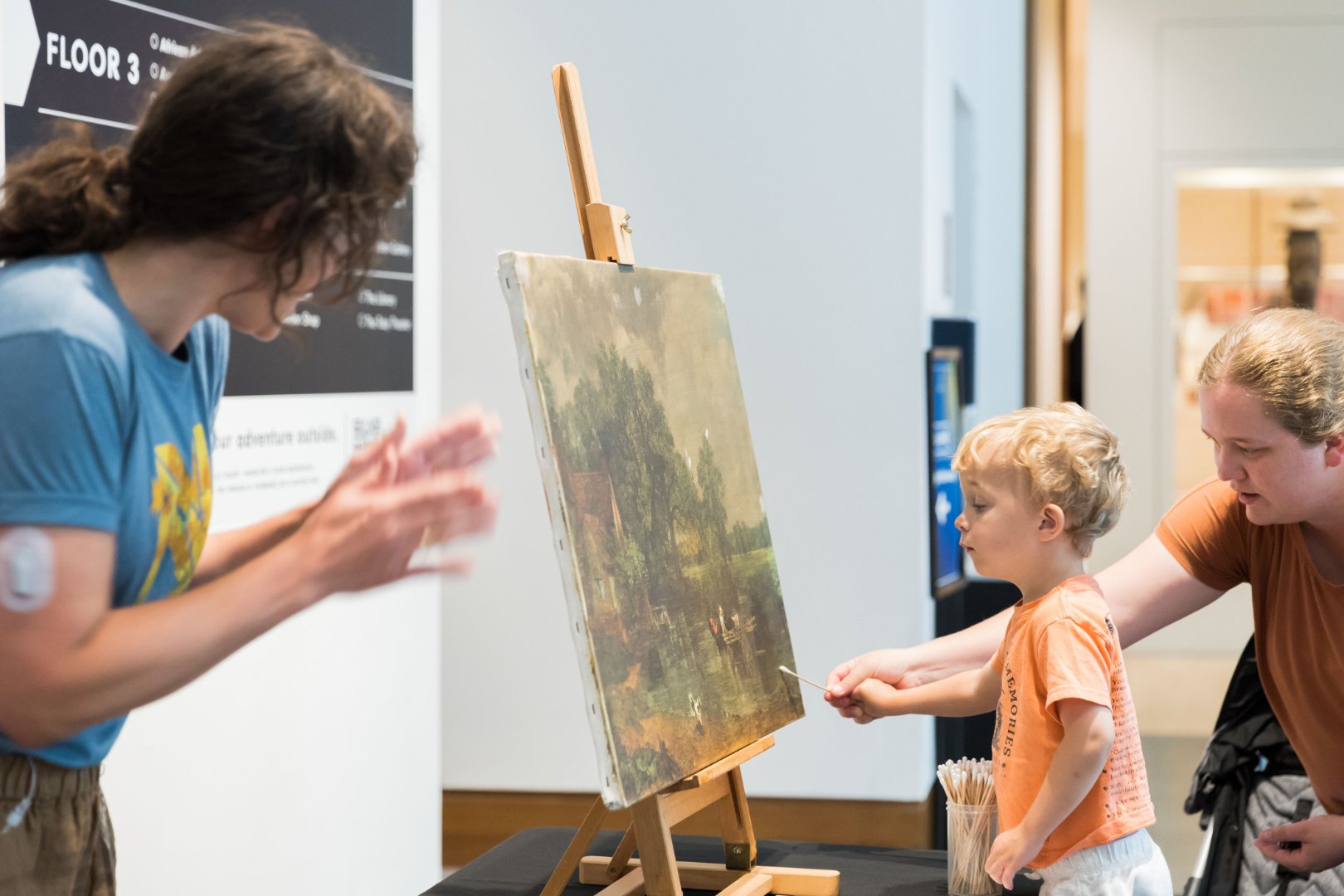Taking Art Off its Pedestal
Your favorite pair of hiking pants just ripped on a recent excursion. What do you do?
Scrap them? Try your hand at sewing an invisible mend? Or proudly place a patch over the rip?
When our Conservation Team is not busy conserving, maintaining, preserving, and researching the Museum’s collection they’re asking our community these types of questions. They’re having conversations about how the care of the Newfields collection relates to the care of everyday objects.
Why? They are tapping into the power of conservation-led thinking and empowering guests to care for the objects they have in their homes and lives. It’s a quest for continual learning.
Each Free First Thursday presented by Bank of America, the Conservation Team literally takes our artwork off its pedestal and hosts a Know Your Art event on the third floor of the IMA Galleries. Through hands on demonstrations and informal Q&As, guests learn about the work conservation does at the Indianapolis Museum of Art and learn how they can look at the art in museums, and their own homes, in a new light.

Below, I chatted with Newfields’ Assistant Conservator of Objects, Allison Slenker, and Clowes Conservator of Paintings, Roxy Sperber, to learn more about this new Know Your Art initiative.
Beth Wood (BW): What have you learned from Know Your Art?
Roxy Sperber (RS): I've learned how interested people are in looking at art differently from how they’re used to in a museum setting. I’ve noticed people enjoy thinking about objects as having a life and having a history. I've also been really impressed by how perceptive children are, especially!
Allison Slenker (AS): It makes me feel empowered that the work we're doing is important and relevant to the public. Know Your Art shows guests the nuances of our work, and demonstrates it’s not just the end results, it’s about the journey to get there. It’s exciting because we’re fostering trust and connection with our guests.
RS: We talk a lot about engaging stakeholders in decision-making around treatment especially, so if an object belongs to a particular community, you might engage that community. But it’s also nice to just see who comes upon us on Free First Thursday. Historically, conservators have had a “secret” job where our work is supposed to be invisible. People don’t even know we exist.
AS: But once people find out about it, they get so excited! They’re like “I didn’t even know that was an option for a career, I didn’t know that job existed, it’s so cool you get to do that.” It’s something that Roxy and I don’t take lightly. We’re so lucky we can work with collection so closely…the work that we do on a daily basis can affect the way that generations of people perceive these artworks.

BW: What surprises you most about the stories shared by our guests?
RS: If they feel safe to mention something they’re worried about in their own home, like “I have my grandmother’s X,Y, and Z that I’m concerned about,” It shows they trust us. Also, it’s wonderful to hear people sharing their victories! They come up with clever ways of fixing and using things that were broken that are very important to them. Historically, there has been a fear in our profession that if we share too much, we will encourage people to do things that could damage their cultural heritage. However, we want to empower people to know what they can safely do to preserve the objects important to them and when they need to contact a professional to help. Additionally, we help them find qualified professionals to help.
AS: Now that we’ve been doing Know Your Art for several months, it’s been fun seeing repeat visitors. There are people that come every single Free First Thursday and stop by our table and ask us what we’re working on now. It makes me feel more connected to our guests and our community.
Meet our Conservation Team at the next Know Your Art event on Free First Thursday, March 7, 2024.
Exhibition Credits:
Free First Thursday is presented by Bank of America.
Image Credits:
Joshua Reynolds (British, 1723–1792), Portrait of a Woman presumed to be Mrs. James Fox, about 1775–1780, oil on canvas, 29-7/8 × 25-1/2 in.; 37-1/8 × 32 in. (framed), Indianapolis Museum of Art at Newfields, The Clowes Collection, 2017.89.




